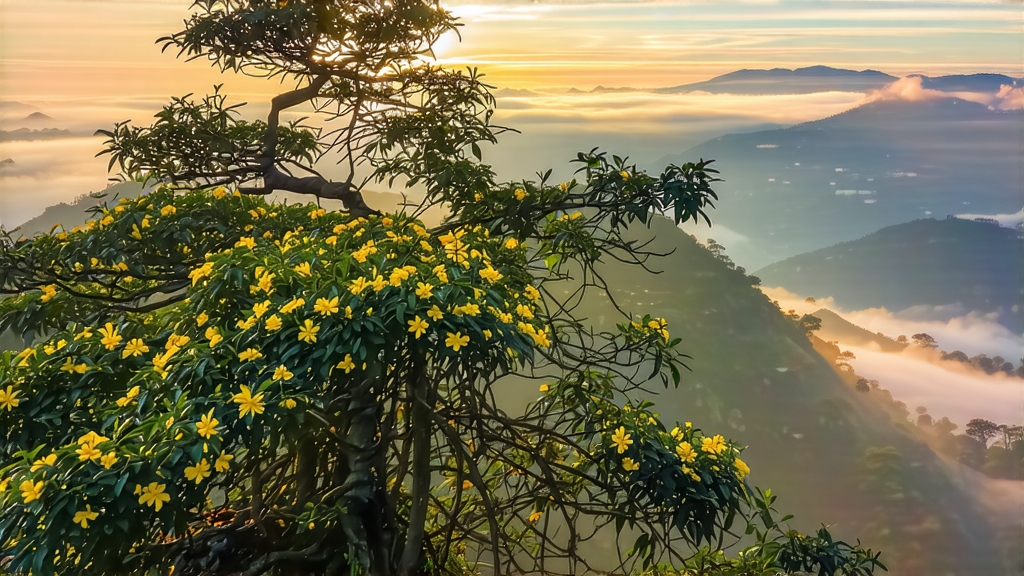
Tucked high on the mist-laced shoulders of Mengding Mountain in Sichuan Province, Mengding Huangya has been quietly perfecting its golden character for more than twelve centuries. Foreign drinkers often celebrate China’s green, black, pu-erh and oolong teas, yet remain unaware that a tiny family of “yellow” teas once commanded higher court prices than the finest dragon-well. Of that family, Mengding Huangya is the ancestor, the benchmark, and—because so little survives—the living fossil. This article invites the international reader to meet the tea that emperors kept for themselves, to understand why its flavour walks the tightrope between green freshness and white mellowness, and to learn how a single, almost-forgotten step called “sealed yellowing” turns spring buds into liquid topaz.
-
A leaf born in the cradle of Chinese tea
Mengding, literally “the summit that overlooks the world in all directions,” rises 1 450 m above the Chengdu plain. Eighth-century monk Wu Lizhen is credited with planting the first seven tea bushes on the mountain’s Five-Peak Ridge; Tang dynasty annals already list “Mengding yellow sprout” as first among the “thirteen imperial teas.” When the Song court moved south, caravans carried compressed cakes of Huangya together with Sichuan silk, ensuring that the emperor’s New-Year rites opened with the same mountain aroma every February. By the Ming the cakes were abandoned in favour of loose leaf, but the tribute quota remained: 360 liang (roughly 18 kg) of the finest buds, picked before the Qingming festival, escorted by armed guard to Beijing. With the fall of the Qing the tea vanished from palace logs; only a few mountain monasteries kept the craft alive, and even locals drank cheap green tea instead. When Chinese scholars revived yellow-tea research in the 1970s, the original cultivar—seed-propagated for over a millennium—was rediscovered behind a single temple wall, its gene pool intact. -
Micro-terroir: why the mountain makes yellow possible
Mengding enjoys a rare double climate: sub-tropical humidity from the Sichuan basin collides with alpine coolness from the Tibetan plateau. Morning fog lingers until noon, filtering sunlight into a soft, diffused glow. The bushes therefore synthesise more theanine and less bitter catechin, giving the raw leaf a natural sweetness that survives the long yellowing process. The soil is a crumbly yellow loam rich in selenium and zinc, drained by countless mountain springs; locals joke that the same water that turns the leaf yellow keeps the farmer’s hair black well into old age. Finally, the mountain’s indigenous small-leaf cultivar (Camellia sinensis var. sinensis ‘Mengding’) keeps its buds tightly furled, protecting the enzymes that will later drive the slow oxidation inside the leaf. -
The six-day odyssey: craft that obeys minutes and ignores hours
Mengding Huangya is made only once a year, in a ten-day window around the spring equinox. Picking begins at dawn when two leaves and a bud are still half-asleep; anything longer than 2.5 cm is rejected. The first step looks like green tea: shaqing, or “killing the green,” fires the leaf in a wok at 160 °C for four minutes to destroy leaf-surface enzymes. But here the paths diverge. While green tea is immediately rolled and dried, Huangya is wrapped—first in thin linen, then in two layers of yellow kraft paper, finally in a bamboo basket lined with corn husks. This bundle, called a menhuang (“yellowing chamber”), is placed in a cave-like store room kept at 28 °C and 75 % humidity. For the next 72 hours the leaf breathes its own moisture, turning from jade to straw-yellow as residual enzymes oxidise chlorophyll into pheophytin. Every eight hours the master opens the bundle, fans away trapped carbon dioxide, and re-ties it slightly looser; the rhythm is less a recipe than a conversation with the leaf. After yellowing the tea is gently rolled for just three minutes to set the shape, then dried in three stages: charcoal-basket baking at 60 °C, rest for two hours, a final 50 °C bake to 6 % moisture. The entire cycle takes six days, during which the farmer sleeps beside the baskets